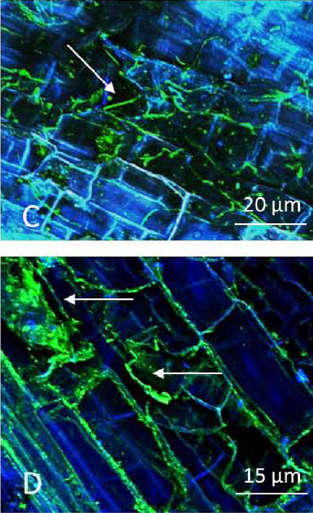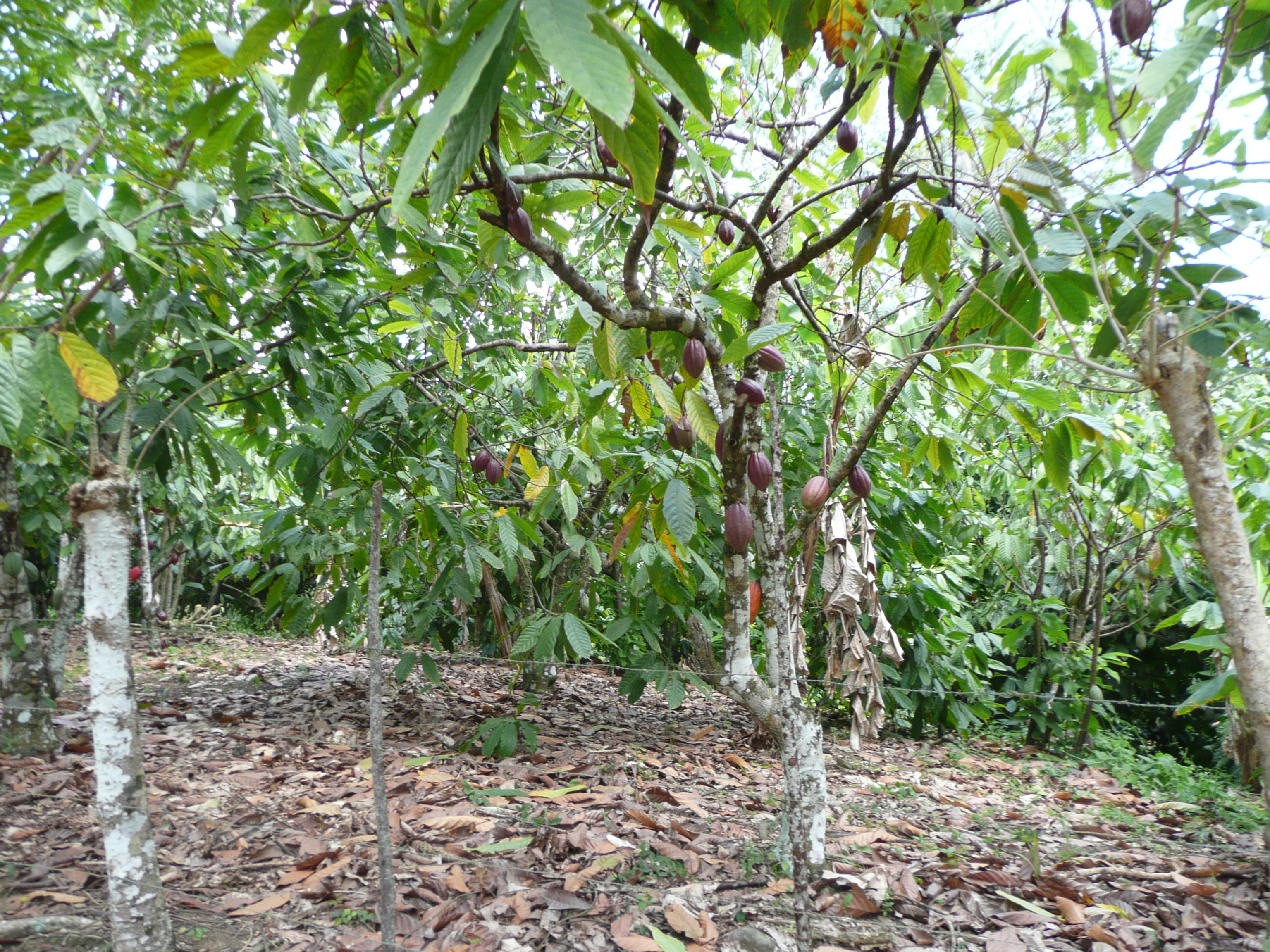This article was published in Scientific American’s former blog network and reflects the views of the author, not necessarily those of Scientific American
Where chocolate begins: the flower of the cacao tree. Credit: H. Zell Wikimedia(CC BY-SA 3.0)
In 1809, a German botanist named
Heinrich Friedrich Link reported something peculiar about healthy plants: they appeared to have fungi growing in them. What were they doing there? And why had the plant not kicked them out? During the 19th century, most scientists thought that healthy plants were sterile inside. Any fungi found there must be at least partially parasitic, some reasoned.
On supporting science journalism
If you're enjoying this article, consider supporting our award-winning journalism by subscribing. By purchasing a subscription you are helping to ensure the future of impactful stories about the discoveries and ideas shaping our world today.
While botanists were puzzling over this mystery, zoologists had made similar, but perhaps less surprising, findings. Lots of bugs – primarily bacteria, but also archaea and fungi – live inside the digestive and reproductive tracts of animals. For a long time it was similarly thought they were just sort of hanging out, not doing much but grazing on whatever happened to float by and, of course, making little bacteria and occasionally trouble. Commensal is the fancy biology word for this: they were benefitting from the posh accommodations, but it wasn’t thought they were doing much to help (or harm) us.
But in the last decade or so, scientists have discovered that these microbes -- now collectively called the microbiome -- exert a surprising, some might even say frightening, amount of control over our
healthandevenhappiness. Among the most well-known benefits of these microbes are the disease-fighting and immune-soothing services of the microbes smeared onto infants during vaginal birth. Something about this process seems to be important for establishing a child’s own community of microorganisms, immune system, and for warding off diseases down the road.
Eventually, botanists also realized that
endophytes – those old mystery fungi together with bacteria and viruses that were also discovered to be living inside plants -- are the plant microbiome. Mycorrhizal fungi – the partially root-dwelling fungi which I’ve talked and written aboutextensivelyhere – are a special subset of endophytic fungi that have gotten way more press than their cohorts living elsewhere in the plant. But leaves as well as roots contain an assortment of resident fungi that can be picked up from pretty much anywhere in the environment. Almost no one outside the world of botany and plant pathology knows this, though.
Yet they are just as important to plants as our microbiome is to us. Far from just hanging out, many leaf endophytes protect their hosts against disease, drought, or just generally improve their vigor. They can secrete anti-microbial substances that deter pathogens, can out-compete pathogens for resources, or may help the plant boost its own defenses. Others seem like they are hanging out waiting for the plant to get sick so they can attack, or to die so it can feast upon the carcass. In some cases, the same organisms that provide benefits to a healthy plant may also capitalize on its illness or death. Life’s complicated like that.

Endophytic fungi (green, white arrows) within a pine tree (C) and clover plant (D). Plant cell walls are light blue. Credit: Hardoim et al. 2015
Many of these effects have been discovered in the lab. Endophytes share a trait that makes them a tempting scientific target: many are easy to grow in a laboratory dish (most fungi and bacteria refuse to grow in lab culture dishes, a vexing and perpetual problem in microbiology). Perhaps their non-picky, couch-surfing ways help explain this. In nature, plants acquire their endophytes from wind-blown spores that land on their leaves, hatch, and penetrate plant tissue. It's a mode of d This leads to another research-friendly property: endophytes are easy to manipulate in the lab. Since they are transmitted by air, you can raise endophyte-free plants in sterile soil in a sterile lab and control which fungi they later encounter.
But what about outside the lab? Do endophytic fungi protect plants out in the real world? And can plant parents can bestow their microflora on their offspring the same way that babies passing through the birth canal acquire a microbiome starter kit from mom? A team of American and Panamanian scientists who decided to tackle these questions and published their results in Proceedings of the Royal Society B in July chose a surprising organism on which to test these questions: cacao, the tropical tree that is the source of cocoa, chocolate, and untold human bliss.

Cacao trees, cacao pods, and cacao leaf litter. Credit: CT Cooper Wikimedia
Its Latin name neatly sums up: Theobromacacao – chocolate food of the gods.
Like all plants, cacao trees attract pathogens like Phytophthora palmivora. P. palmivora is an
oomycete, an organism that looks and acts like a fungus but is only distantly related to them, much like whales are to fish. The most famous oomycete is Phytophthora infestans, the cause of the Irish Potato Famine. P. palmivora causes Black Pod, cacao’s most expensive and prevalent disease.
Scientists had already established that cacao seedlings acquire more endophytes when they are exposed to more leaf litter – the piles of dead plant parts that accumulate on the forest floor. How would leaf litter from cacao trees affect the number of endophytes in cacao seedlings, and would they be better protected from pathogens like black pod than seedlings exposed to leaf litter from a variety of other trees or to no litter at all?
The team found that while exposure to cacao leaf litter from a healthy wild cacao tree (sadly, they could only find one of these in their region of Panama) resulted in a young tree with fewer and less diverse endophytic fungi than no litter at all. Trees exposed to cacao litter were also more likely to host the cacao-friendly fungus Colletotrichum tropicale. C. tropicale has been shown to boost black pod resistance when artificially introduced into cacao trees because it boosts defense responses in cacao. And indeed, the plants exposed to cacao leaf litter tended to be less damaged by artificial infection with black pod than any other experimental treatment.

Credit: Christian et al. 2017
Although any litter exposure helped, plants that were treated with cacao litter showed the least damage overall and about 50% less damage than plants treated with mixed leaf litter from other species. Seedlings that were given no litter may host a greater diversity of endophytes because they are more likely to be colonized by weedy, easily-dispersed endophytic fungi that haven’t specialized in living within and protecting cacao as C. tropciale has.
One important implication is that cacao farmers can give their seedlings a good start in a simple way: by collecting leaf litter from healthy older trees and spreading it around seedlings. If seedlings are planted in big fields away from older trees, such a practice could improve seedling health without having to individually inoculate each tree with C. tropicale.
It also implies that cacao trees are a lot like humans. Babies born by Caesarian section tend to acquire a bigger diversity of less-specialized, perhaps more weedy bugs from the environment while vaginally-born babies, who acquire a much smaller microbial community dominated by the bacteria Lactobacillus. These differences lead, in just one example, to a much greater susceptibility to a pernicious hospital pest called
methicillin-resistant Staphylococcus aureus, also known as MRSA.
Similarly, early colonization of cacao by C. tropicale seems to inhibit both colonization by other endophytes and pathogens. In both cases, acquiring a smaller, more specialized microbial community from a parent seems to yield health dividends down the road. In spite of the evolutionary gulf between a human and a plant, the passage through the birth canal and the gentle rain of cacao leaves contain similar gifts to the next generation: microbial super friends.
Reference
Christian, Natalie, Edward Allen Herre, Luis C. Mejia, and Keith Clay. "
Exposure to the leaf litter microbiome of healthy adults protects seedlings from pathogen damage." In Proc. R. Soc. B, vol. 284, no. 1858, p. 20170641. The Royal Society, 2017.